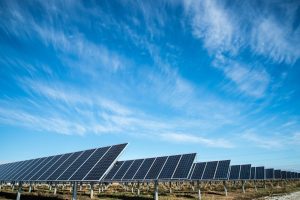On 1st February 2022, FM Smt. Nirmala Sitaraman Ji, tabled ambitious budget 2022 in the parliament. One of key highlight of budget this year is government’s determined reiteration of its commitment towards energy transition as well as towards tackling climate change.

FM reiterated what Hon’ble Prime Minister said at the COP26 summit in Glasgow last November, “what is needed today is mindful and deliberate utilisation, instead of mindless and destructive consumption.” The low carbon development strategy as enunciated in the ‘panchamrit’ that he announced is an important reflection of our government’s strong commitment towards sustainable development.
Keeping that in mind some major announcements has been made for sectors like renewable energy, energy efficiency, electric mobility, data centres, building efficiency, grid-connected energy storage and supporting incentives for green bonds. Let us looks some of them here.
Solar Energy
In order to support domestic manufacturing of solar panels to meet target of 280 GW of solar energy by 2030, Rs. 19,500 Crs. has been allocated for Productivity Linked Incentives (PLI) for highly efficient modules, with priority to fully integrated manufacturing units from polysilicon to solar PV modules, will be made.

Battery Swapping Policy
Considering the constraint of space in urban areas for setting up charging stations at scale, a battery swapping policy will be brought out and inter-operability standards will be formulated. The private sector will be encouraged to develop sustainable and innovative business models for ‘Battery or Energy as a Service’. This will improve efficiency in the EV ecosystem.
Transition to Carbon Neutral Economy
Around 5% to 7% biomass pellets will be co-fired in thermal power plants resulting in CO2 savings of 38 MMT annually. This will help avoiding stubble burning in agriculture fields.
In large commercial buildings, through the Energy Service Company (ESCO) business model, energy efficiency and savings measures will be promoted.
Four pilot projects for coal gasification and conversion of coal into chemicals required for the industry will be set-up to evolve technical and financial viability
Green Bonds
As a part of the government’s overall market borrowings in 2022-23, sovereign Green Bonds will be issued for mobilizing resources for green infrastructure. The proceeds will be deployed in public sector projects which help in reducing the carbon intensity of the economy.
Infrastructure Status
Data Centres and Energy Storage Systems including dense charging infrastructure and grid-scale battery systems will be included in the harmonized list of infrastructure.
India’s commitment for energy transition is not new, India has already successful installed over 100 GW renewable energy plants and still have a long way to go. This budget has come in right spirit acknowledging the priorities, let us hope it gets translated in reality in same spirit.


